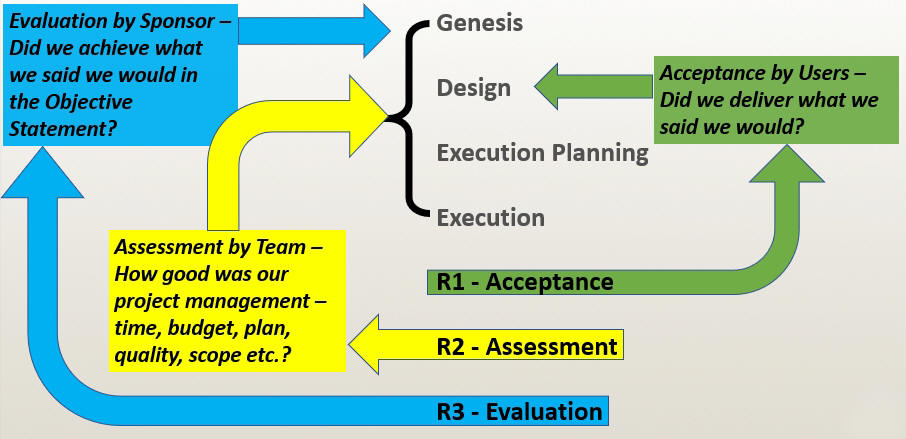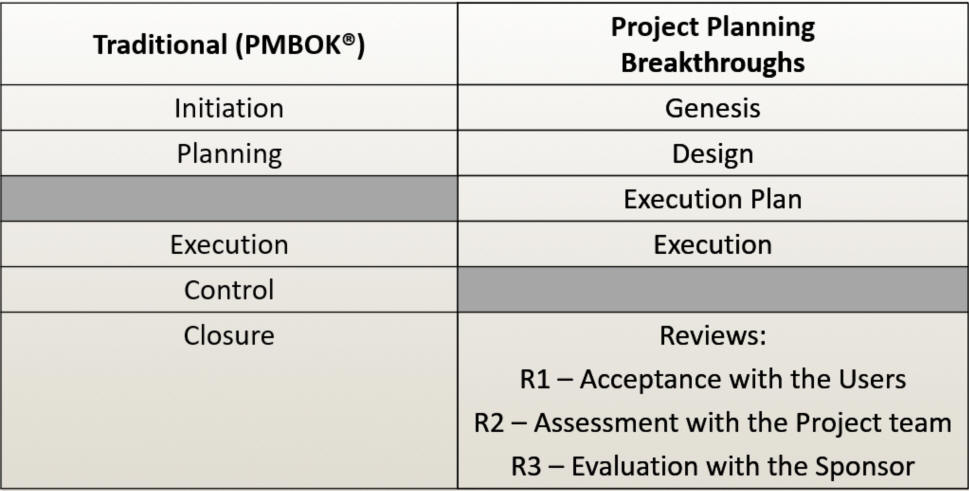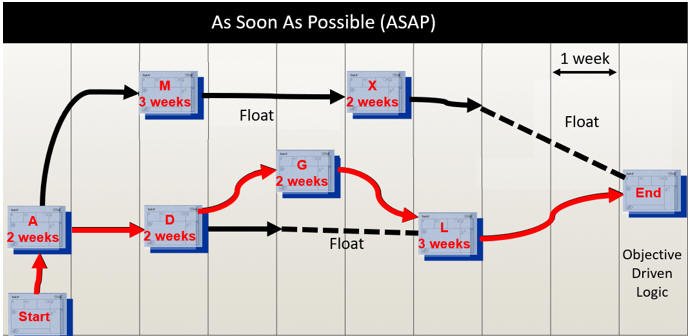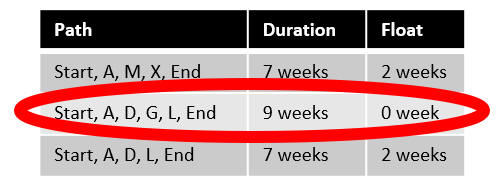Lexicon / Project Planning Breakthroughs
Previous / next: PRINCE2 / AddVantage
Using the Project Planning Breakthroughs approach
The following is the Doldrum Bay Consulting high-level summary of the Project Planning Breakthroughs approach as proposed by Mackenzie Kyle in his book "Making it Happen: A Non-Technical Guide to Project Management", and visualised by Priority Management International Training in their training programme "Project Planning Breakthroughs". [1] [2]
Making it Happen
The Project Planning Breakthroughs approach is based on the methods, procedures and techniques outlined in the book "Making it Happen: A Non-Technical Guide to Project Management" by Mackenzie Kyle. The book is written in the style of a novel and teaches the basics of project management theory and practice by telling the story of the life of a project through the eyes of the project manager. [1]
The overall Project Planning Breakthroughs approach is based on the standard proposed by the Project Management Institute and therefore attendance on the training course gives attendees up to 21 PDUs (Professional Development Units) as recognised by the Project Management Institute.
Methodology / Procedure / Technique
According to the Doldrum Bay Consulting Lexicon of Project Management terms, Project Planning Breakthroughs has two major elements to it; it has a methodological approach to its project structure and process, and, through its use of a Resource-Loaded CPM (Critical Path Method), it includes a procedure and technique for capturing and managing the critical path. Therefore, it can be defined as part methodology and part procedure / technique.
What is a project according to Project Planning Breakthroughs?
In the book "Making it Happen: A Non-Technical Guide to Project Management" by Mackenzie Kyle, all projects start out as Assignments.
An Assignment is a specific responsibility transferred in order to achieve a stated objective. This responsibility is usually conveyed to a Project Manager using the Objective Statement document (see key deliverables below). An Assignment becomes a project only if and when the approval has been given to develop the Execution Plan.
Note that not all assignments become projects (i.e. they may not be approved for implementation).
Key components in Project Management according to Project Planning Breakthroughs
Project Planning Breakthroughs describes a project structure with a series of five specific processes that are similar in nature to the process groups proposed in the PMBOK® Guide.
- Genesis - clarifying exactly what the project is all about and what it is to achieve. The outcome is an unmistakable description of the expectations, the constraints and the Assignment of authority to act
- Design - focuses on the requirements for both the conceptual and the detailed design, bearing in mind any performance criteria. The outcome is an unmistakable description of the deliverable – with enough detail to determine how to produce it.
DESIGN STEPS
- Preliminary Design: problem solving, generation of options, feasibility analysis, proposed "best" solution
- Preliminary Design Sign-off by Sponsor
- Produce Detailed Design Schedule and Cost Estimate
- Detailed Design Schedule and Cost Approved by Sponsor
- Detailed Design
- Sponsor Approves Detailed Design
- Execution Plan - focuses on the true planning activities around tasks, their duration, dependencies and schedule. The outcome is an unmistakable description of how to create the deliverable.
- Execution - considers the reality of the change and its implication on the project and the interdependent variables of quality, scope, schedule and cost. The outcome is that the deliverable (as described by the Design) is created (as described by the Execution Plan).
- Reviews (3) - three separate reviews (R1, R2, and R3) of the whole process carried out by different groups of key stakeholders. See image below. The outcome is to bring final closure to the Assignment while taking advantage of all the learning opportunities.

How does this structure and process compare with the PMBOK® Guide?

Example deliverables according to Project Planning Breakthroughs
The Objective Statement
The Objective Statement answers the following questions:
- What is wrong with the existing situation?
- How will things be better when we are done?
- What are the performance criteria for the deliverables?
- What is the scope of the assignment (i.e., what is in the assignment and what is not in the assignment)?
- What are the specific constraints regarding cost, time, quality, and so on?
- Who is the sponsor?
- Who is the project manager?
- What authority is being given?
Time-Scaled Dependency Chart
The Project Planning Breakthroughs approach is a Resource-Loaded CPM (Critical Path Method).
In order to display the Critical Path, the approach uses a Time-Scaled Dependency Chart. This chart shows the logical links, relationships and dependencies between different tasks over defined periods of time and helps to identify and display the resource-loaded critical path.
Using Objective Driven Logic, the method reverse-engineers the end state by starting at the end (the Objective) and, working backwards, continually ask the question: "what needs to be complete and in place for this task to start?"
Once all predecessors for all the tasks have been established, the logic of the Execution Plan is revealed.
Definitions
Float (or Free Float): The amount of time a task can be delayed without delaying the start of its “successor” task. This should not be confused with contingency which is where you add a ‘reserve’ amount of time on a task to cover the possibility of a risk event or occurrence.
The Critical Path (the path with the least amount of float) will be much easier to identify once the complete logic is established.
In the following example of a Time-Scaled Dependency Chart, the tasks have been moved to be as soon as possible, so as to leave any float at the end of the task or project.
As the Critical Path is the path with the least amount of float, it is also the longest path connecting the Start and the End of the project (marked in red in our example). It therefore defines the overall duration of the project. In our example, this is 9 weeks.


References
[1] Making It Happen: A Non-Technical Guide to Project Management Mackenzie Kyle ISBN: 978-0-471-64234-3 July 1998
[2] Project Planning Breakthroughs training courses, © Priority Management International Inc. All rights reserved.
"Project Planning Breakthroughs" is a trademark of Priority Management International Inc. © Priority Management International Inc. All rights reserved.
"PMI" is a service and trademark and "PMBOK" is a trademark of the Project Management Institute, Inc. which is registered in the United States and other nations.
Other Project Management approaches and methodologies
To learn about some of them, choose one of the following methodologies/approaches/good practices: